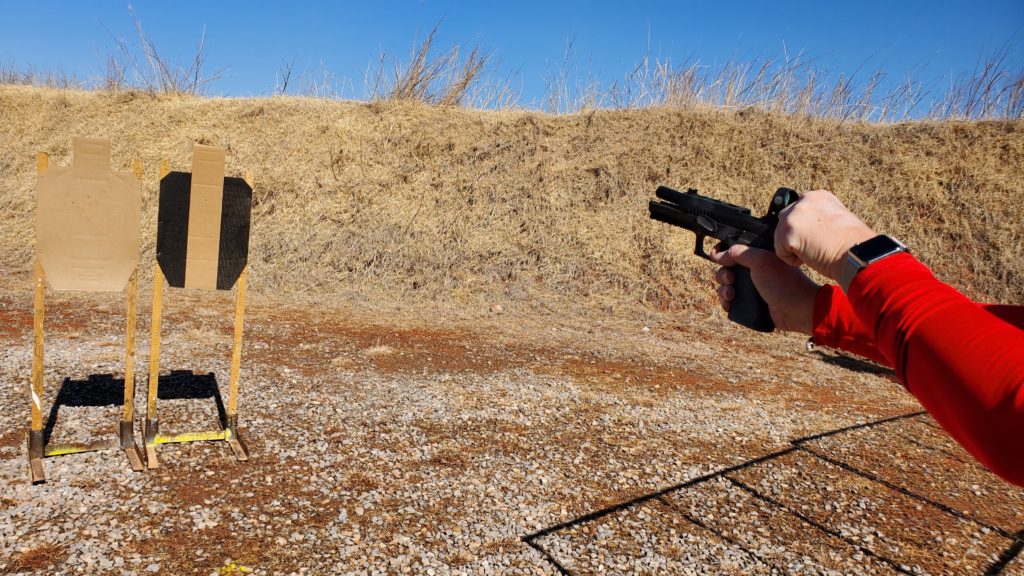I think I heard more comments about this Question of the Month during the voting period than any other. This is probably due to the fact that everyone wanted to know what the correct answer is. Well, the wait is over but first let’s review the question.
The best three hits per target score. The competitor is engaging an array of two targets and has a malfunction while firing the third shot on one of the targets. The competitor quickly racks the slide to clear the jam as in the picture below. What do you do as RO?

And here are the results of the poll:
Before I get to what the answer is, let’s look at the rule which is under the unsafe gun handling DQ section of the rules, 10.5.8: “Failure to keep the finger outside the trigger guard while clearing a malfunction where the competitor clearly moves the firearm away from aiming at targets.” And thanks to some rulebook research by RMI Jay Worden, prior to the 1996 edition of the IPSC rulebook this rule as it is worded now did not exist. So this rule has been around for awhile but was not one of the original rules of the sport. Why did this rule get added? Probably from something that happened at a match, and most likely it was someone shooting a handgun with a broken extractor that required the slide to be manually racked between each shot.
Now, the question we asked is flawed since we used a still picture that was taken to purposely show the finger in the trigger while racking the slide and aiming at targets. ROs will not have the luxury of a still frame to examine and will need to make the call in real-time for an action that happens very, very quickly. And the RO’s definition of ‘aiming’ also plays into this. The current USPSA rules do not define aiming in the glossary but IPSC defines it as “aligning the barrel of a firearm at targets”. That is a broad definition and discussion among the RMIs varied from that definition to actually being able to see the target through the sights/dot while racking the slide. Yes, I am saying that the RMIs couldn’t even agree on an answer and actually wanted to just avoid the question. But avoiding the question is not an option, especially when there seems to be some disagreement and/or confusion around a rule.
So what is the final answer? The final answer is that this is going to be a call the RO makes at that moment and there isn’t one correct answer for this Question of the Month. The top two responses are both the correct answer depending on the situation and what the RO observed at the time of the event. And like calls for breaking the 180 or finger in the trigger guard during movement or loading, unloading, reloading, we want the RO to be 100% sure of what he/she saw before making the call. If you as the RO are 100% sure that the competitor was not aiming at targets when clearing the malfunction with their finger in the trigger guard, then the correct answer is to say “Stop” and administer the DQ. If you are the RO and are unsure of what you saw, then say nothing and let the competitor continue. I know some of you were hoping for a definitive black and white answer, but this is one that requires the RO to call what they see when 100% sure of what they saw.
Remember to vote in the current Question of the Month!